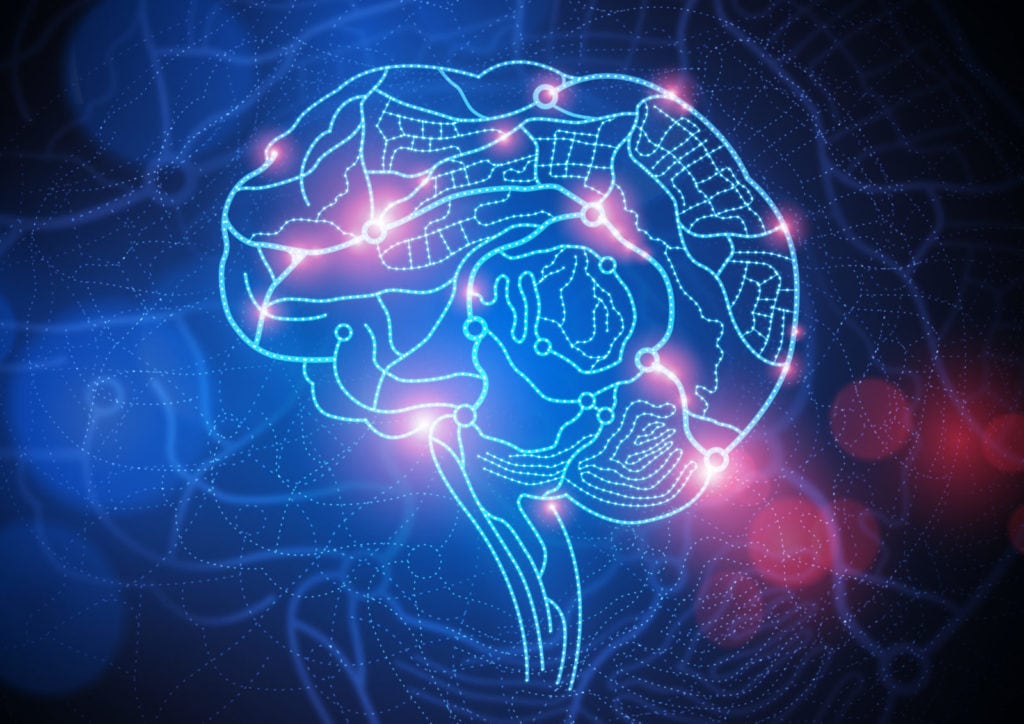What fires in the brain, wires in the brain

What an interesting and thought-provoking idea. Paradoxically complex and yet surprisingly simple to explain in terms of anxiety and, in particular, and low mood. Let me expand on this…
Anxiety is a feeling of unease, such as worry or fear, that can vary widely in degree of severity. Some feelings of anxiety can be perfectly normal, such as before an exam, job interview or in a challenging situation. Anxiety is a positive part of a natural instinctive process to survive in the external environment. The body tries to create a balance. However, if there has been a prolonged period of difficulty, such as relationship, financial or work problems, ill health, or bereavement, for example, or traumatic childhood or even current experiences, then anxiety becomes difficult to control. It becomes more constant and has no particular, rational reason; it may be that life experiences could be triggering an ongoing instinct to face challenges, adapt and survive, long past the need to do so.
To put this into context… have you ever experienced a difficult situation where others may say “I don’t know how you coped” but you just did? But when the problem/situation was no longer there, you ‘fell apart’ or became anxious, worrying about everything that didn’t bother you before?? Read on…
A tiny bit of neuroscience here, but not too much!
The nervous system is a network of complex cells that co-ordinate to allow functioning and can be divided into the Central Nervous System (CNS) – brain and spinal systems – and the Peripheral Nervous System (PNS) – relays between CNS and rest of body. The PNS can be further sub-divided into the Autonomic – ‘self regulating’ involuntary control, such as heart rate, pupil constriction/dilation and saliva – and Somatic – sending signals under voluntary control to muscles and senses. It is within the autonomic nervous system (ANS) where we find the focus for anxiety. The ANS is always activated but it is either in the sympathetic or para-sympathetic state. Depending on the situation, one state can dominate the other, resulting in a release of different types of neurotransmitters. For example, the sympathetic system is activated during a challenging or dangerous situation producing an instinctual fight or flight response, whereas the para-sympathetic system allows the body to function in a ‘rest and digest’ state.
Different chemicals are released into the body during each state. It is normal to be faced with a challenging situation from time to time. When you encounter a perceived threat, the amygdala, a tiny part of the limbic system within the brain and responsible for emotions, survival instincts and memory, sets off an alarm system in the body and signals to the hypothalamus to release hormones. The sympathetic system is activated and the release of dopamine, epinephrine (adrenaline), norepinephrine (noradrenaline) and cortisol helps us to deal with the situation before returning to the ‘normal state’ dominated by the para-sympathetic and somatic systems.
These chemicals have positive effects. For example, adrenaline increases your heart rate, elevates your blood pressure and boosts energy supplies. Cortisol increases sugars (glucose) in the bloodstream, enhances your brain’s use of glucose and increases the availability of substances that repair tissues. A panic attack is the result of a sudden rush and overload of these chemicals in response to a trigger.
However, should a challenging situation last for a period of time (even if it is now resolved), be constant or be particularly traumatic, the brain, in order to keep us safe and able to cope, recalibrates the response to make the release of ‘stress chemicals’ the normal state and that fight or flight reaction stays turned on. The overload of those ‘helpful’ chemicals can then have a detrimental effect on our mental and physical wellbeing. Cortisol, the primary stress chemical, for example, also curbs functions that would be non-essential or detrimental in a fight or flight situation, as well as altering immune system responses and suppressing the digestive system, altering the reproductive system and growth processes. This is detrimental in the long-term and can lead to problems such as anxiety, depression, digestive problems, headaches, heart disease, sleep problems, weight gain, and memory and concentration impairment.
Hebbian theory of what ‘fires together, wires together’, in relation to clusters of neurons that network together during a learning process, can be useful in understanding how we can reverse the negative script that has become hardwired in our brain due to a prolonged period of stress and which affects our mind and body. Medication can be helpful to reduce effects in the short-term. The para-sympathetic system is our natural repair centre. Our bodies have an incredible ability to heal themselves. So, to manage and control anxiety, we need to take action to increase the para-sympathetic system with intention. That is, it won’t just happen – we have to take action to re-wire the brain. We have to actively engage in our repair to reduce the excess stress chemicals and present a different model to the brain.
This is where counselling and psychotherapy can complement science to help you to help yourself.
So what can you do?
As already explored, negative emotions create disorder in the brains’ regulatory systems and ANS. In order to present a different model to the brain, it is essential to increase positive emotions to begin to replace negative ones. Scientific evidence demonstrates a link between mental, physiological health and long-term wellbeing. Therefore, taking control, managing or demonstrating leadership of your mind involves embarking on a combined approach. Engaging in activities that you derive pleasure from, exercise and addressing your diet will all have a positive impact. Beginning new habits by initially setting yourself a schedule of something you are going to do for pleasure each day, even for half an hour, will begin to increase the positive chemicals and affects change in the hippocampus in the limbic, emotional part of the brain.
Meditation, mindfulness, yoga, grounding and breathing exercises have a calming, peaceful effect. Becoming self-aware and conscious of your anxious moments will allow you the opportunity to use coping strategies to help you identify your irrational thoughts and replace them with alternative perspectives based on the reality of the situation, thus reducing the perceived danger. Exploring the cause of your stress will enable you to take action to change your behaviour, for example if work related, taking those lunch breaks, taking a ten minute walk in the fresh air, setting boundaries. If the cause of your anxiety derives from the past and deep-rooted issues, obtaining help to process those experiences that trigger negative reactions can be liberating. Producing a daily ‘pat on the back’ diary or journal to offer kindness and appreciation to yourself increases your confidence, self belief and emotional wellbeing.
The above are examples of changed thoughts and behaviour. Just as there are a number of different approaches to therapy (and it is essential to find the right therapist for you), the range of methods to help your recovery are extensive and tailored to your needs. What is important is that you believe it is possible, that whilst help and support is available, only you can perform the re-wiring and that you don’t give up… it takes time.
References/sources:
www.mindbodybreakthrough.co.uk; Wale Oladipo
https://en.wikipedia.org/wiki/Peripheral_nervous_system
https://www.mayoclinic.org/healthy-lifestyle/stress-management/in-depth/stress/art-20046037
Siegrid Löwel, Göttingen University; The exact sentence is: “neurons wire together if they fire together” (Löwel, S. and Singer, W. (1992) Science 255 (published January 10, 1992) “Selection of Intrinsic Horizontal Connections in the Visual Cortex by Correlated Neuronal Activity”. United States: American Association for the Advancement of Science. pp. 209–212. ISSN 0036-8075.

